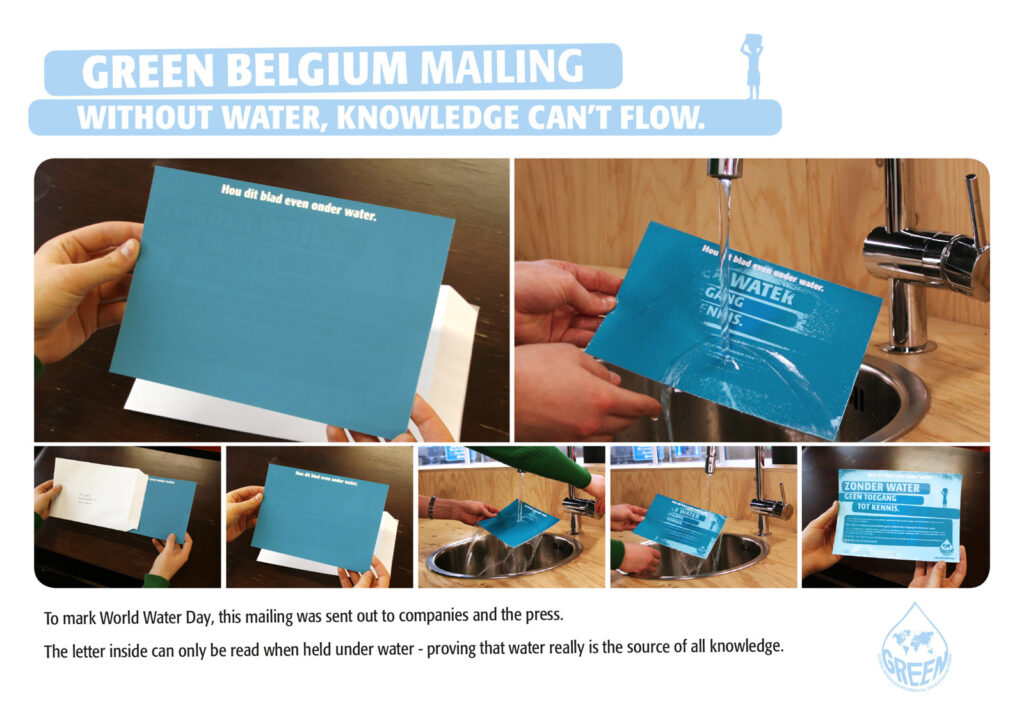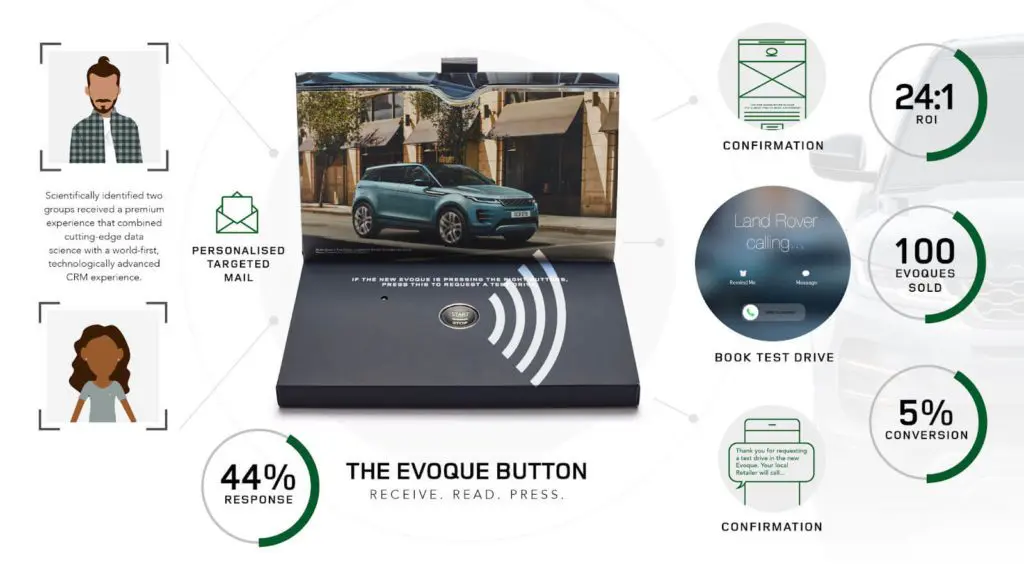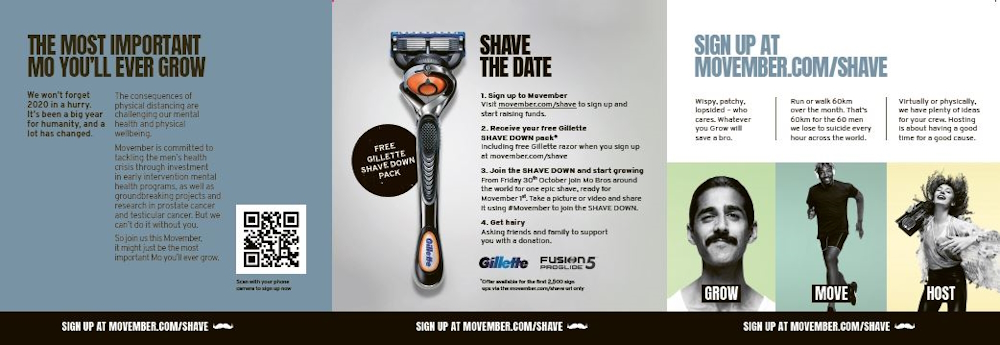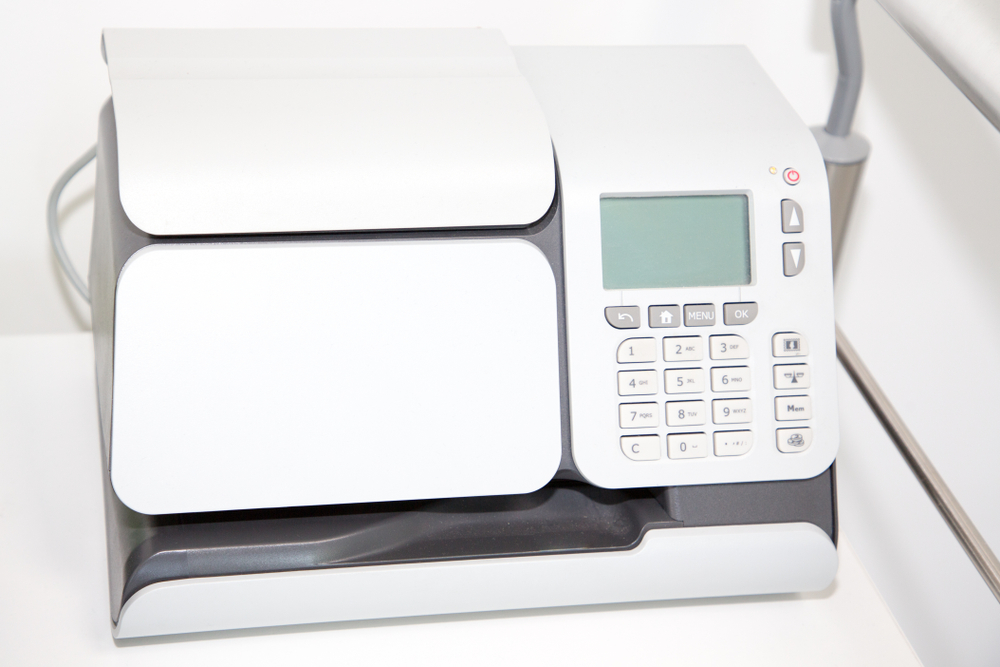Direct mail marketing is one of the most powerful ways to connect with your audience because it creates a physical, tangible touchpoint that captures attention. With response rates often surpassing digital channels, it allows businesses to stand out in a crowded marketplace—when done right. With open rates far higher than email and the ability to create a tangible, personal experience, direct mail has the potential to drive serious results. But too often, businesses make avoidable mistakes that can lead to wasted budgets and underwhelming responses.
Don’t let your direct mail efforts go to waste—avoid these common pitfalls and watch your response rates soar! Here are the five biggest mistakes businesses make when sending direct mail—and how you can avoid them.
1. Lack of personalisation
Sending a generic mailer to “Dear Customer” is a surefire way to get tossed in the bin. Personalisation is key! Customers expect relevant, targeted messaging that speaks to their needs.
How to avoid a lack of personalisation in your direct mail
- Use variable data printing to personalise names, locations, or even past purchase history.
- Segment your audience to tailor offers and messaging.
Pro Tip: Leverage your CRM data (such as Zoho CRM) to pull customer-specific details like past interactions, purchase history, or preferences. This allows you to craft highly relevant and engaging messages that feel truly personal.
2. Weak or confusing Call-to-Action (CTA)
A strong, clear CTA is essential to guide recipients toward the next step and encourage them to take action. A vague or missing CTA leads to missed opportunities.
How to avoid a weak CTA in your Direct Mail
- Make your CTA clear and compelling (e.g., “Claim your 20% discount today!”).
- Use urgency (e.g., “Offer expires in 7 days!”) to encourage action.
- Include multiple ways to respond, such as QR codes, website links, or phone numbers.
Pro Tip: Test different CTA variations using A/B testing to determine which messages drive the highest response rates. Even small tweaks in wording can significantly impact engagement.
3. Poor design and layout
A cluttered, hard-to-read design will send your mail straight to the recycling bin. Your piece should be visually appealing and easy to digest.
How to avoid poor design your Direct Mail
- Stick to a clean, professional design with plenty of white space.
- Use high-quality images and legible fonts.
- Highlight key information with bold headers and bullet points.
Pro Tip: Use eye-tracking principles to design your mailer. Ensure the recipient’s attention naturally flows from the headline to the CTA by using contrasting colours, directional cues, and whitespace effectively.
4. Failing to track and measure results
If you’re not tracking the success of your direct mail campaign, you could be missing crucial insights—like which offers drive responses or which audience segments engage the most.? Many businesses send mail blindly without any performance metrics.
Why failing to track results is such a Direct Mail mistake
- Use unique coupon codes or landing pages to track responses.
- Implement QR codes for instant digital engagement.
- Monitor conversion rates and tweak future campaigns accordingly.
Pro Tip: Integrate direct mail tracking with Google Analytics by using custom UTM links. This allows you to analyse how recipients interact with your website after receiving your mail.
5. Not Following Up
Direct mail should be part of a larger marketing strategy, not a one-off effort. Many businesses miss the opportunity to follow up with leads generated from their mail campaign.
How to follow up on Direct Mail campaigns
- Follow up with an email or phone call after sending a mail piece.
- Use retargeting ads to reinforce your message digitally.
- Send a second mailer with a reminder or a better offer.
Pro Tip: Automate follow-up sequences using a CRM or email marketing tool, like Zoho Marketing Automation. A well-timed digital touchpoint after a mail piece increases conversion rates and reinforces brand recall.
Conclusion
Direct mail can be a game-changer for your marketing strategy—when executed correctly. By avoiding these five common mistakes, you can increase engagement, maximise your return on investment, and ensure your message gets in the right hands.
Want to send high-impact direct mail without the hassle? Try Postalzoom for free for a simple, cost-effective way to automate your direct mail campaigns today!
The start of a new year is the perfect time to revamp your marketing strategy, and there’s one tool you shouldn’t overlook in 2025: direct mail. In a world dominated by digital noise, direct mail offers a tangible, personal touch that captures attention and builds stronger connections with your audience.
Here’s why direct mail deserves a spot in your 2025 marketing strategy—and how Postalzoom can help you make it happen.
1. Direct Mail marketing cuts through the clutter
The average person receives over 100 emails a day. How many get opened? Direct mail, on the other hand, has a much higher open rate—up to 90% in some cases. When your message lands in someone’s mailbox, it’s more likely to be seen, read, and remembered. And we know you keep direct mail around longer than most marketing emails!
2. Combine Digital and Physical marketing mail for greater impact
Direct mail doesn’t have to replace your digital campaigns—it can enhance them. Imagine sending a postcard with a QR code leading to a personalised landing page or a catalog with an exclusive discount code. Studies show that combining direct mail with digital marketing leads to significantly higher response rates and ROI.
3. Build Trust and Authenticity with your marketing
In 2025, customers are prioritising brands that feel authentic. A well-designed piece of direct mail—whether it’s a personalised thank-you note, an invitation, or a special offer—shows care and effort, fostering trust and loyalty.
4. Direct Mail is ideal for any industry
From retail to nonprofits, direct mail works for everyone. Send postcards to promote a New Year sale, brochures to introduce your services, or fundraising letters to start the year strong. Whatever your business goals, direct mail can help you achieve them.
5. Start your 2025 marketing right with Postalzoom
Postalzoom makes it easy to create, customise, and send direct mail campaigns without breaking a sweat. Whether you’re a small business or a marketing pro, our platform streamlines the process so you can focus on what you do best: growing your business.
Let’s make 2025 your best year yet!
Kick off the new year with a marketing strategy that cuts through the noise and connects with your audience in a meaningful way. Try Postalzoom today with our free letter or postcard trial and see the difference direct mail can make for your business.
📬 Start your free trial now!
In the digital age, marketing can feel like a race to be seen amidst constant noise. Every inbox is full, every social feed crowded. But what if there was a way to cut through the digital clutter and leave a lasting impression? Enter physical mail.
Far from being a relic of the past, direct mail is becoming a critical piece of integrated marketing strategies. By bridging the gap between physical and digital, you can create a cohesive experience that reinforces your brand, drives conversions, and engages your audience in new ways.
Why Physical Mail Works
Here’s why direct mail stands out as the perfect complement to your digital efforts:
1. Physical mail – a tangible connection
Physical mail creates a tactile, personal experience that digital campaigns simply can’t replicate. It gives your audience something they can hold, read, and keep—making your message more memorable.
2. Screen fatigue relief
Let’s face it: people are tired of screens. Offering a break with beautifully designed, high-quality mail can surprise and delight your audience, increasing their receptiveness to your brand.
3. Enhanced digital engagement
By strategically linking your mail pieces to digital channels, such as QR codes or custom landing pages, you can seamlessly drive recipients online to continue their journey with your brand.
Integrating physical and digital campaigns with direct mail
Here’s how to combine the strengths of both worlds for maximum impact:
Reinforce your message
Use physical mail to mirror your digital campaigns. A postcard that follows up on an email or a flyer that echoes your social media promotion can create a unified brand presence.
Green Belgium – World Water Days invisible postcard message
To emphasise the critical importance of water conservation, Green Belgium launched a creative direct mail campaign for World Water Day in 2009. They sent recipients a message that remained invisible until exposed to water, transforming the act of reading into a compelling and interactive experience.
This approach captivated audiences by requiring their direct participation, leading to high levels of engagement and making the campaign remarkably effective.

Drive conversions with physical mail
Include calls to action that connect directly to your digital campaigns, such as exclusive discounts, event registrations, or QR codes leading to a personalised webpage.
Land Rover – Start/Stop Button Postcard
Land Rover launched a brilliantly innovative direct mail campaign using Internet of Things (IoT) technology. The mail pack included a replica of the car’s engine start button. When recipients pressed the button, it sent a message directly to their nearest Land Rover retailer, bridging the physical and digital marketing worlds seamlessly.
This inventive approach delivered outstanding results: Land Rover’s direct mail response rate soared to an impressive 48%, a tenfold increase. The campaign also achieved a remarkable 24x return on investment, showcasing the impact of combining creativity and technology in direct marketing.

Measure success
Track engagement through digital tools, like unique links or analytics tied to QR codes, to measure the effectiveness of your campaigns and adjust for the future.
Movember – QR code vs URL link
The primary goal of this campaign was to drive fundraiser sign-ups for Movember, and it proved to be one of the most successful Movember initiatives in recent years. Whistl’s Doordrop campaign achieved a direct response rate of 0.8%, delivering an impressive ROI of £9.21. Post-campaign analysis revealed an even higher ROI of £10.20.
A key factor in the campaign’s success was the inclusion of a QR code, which accounted for 21% of the total direct responses. It also outperformed traditional URLs, with a 34% conversion rate for sign-ups compared to 30% for the web link. This highly effective campaign leveraged regional targeting and innovative use of QR codes to engage Movember’s core audience and achieve outstanding results.

Physical Mail – The Postalzoom difference
At Postalzoom, we make integrating direct mail into your marketing strategy simple and seamless. Our platform automates the process, helping you create personalized, targeted mail pieces that align with your digital efforts.
With Postalzoom, you can:
✅ Easily generate physical mail from your CRM or other systems.
✅ Customise campaigns with dynamic fields for personalisation.
✅ Track performance to ensure you’re getting the best ROI.
Final Thoughts
Physical mail isn’t a replacement for digital—it’s the perfect partner. Together, they can create an impactful, multi-channel strategy that resonates with your audience and drives results.
Ready to elevate your marketing? Start integrating physical mail into your campaigns today with Postalzoom. Why not try it today for yourself with our free trial.
In a world filled with digital messages, direct mail marketing remains a powerful tool, especially for certain industries where personal, tangible outreach has a big impact. Let’s dive into five sectors that set to benefit from direct mail most effectively, helping you understand why it works so well and how businesses in each sector can make the most of it.
Why Direct Mail? It Drives Action.

Direct mail isn’t just about delivering a message—it’s about creating a buzz that drives real results. Take Toyota, for example. By leveraging the power of direct mail, Toyota created an innovative campaign that combined physical mail with digital engagement. A microchip and timer embedded in the mail prompted recipients to visit the Corolla website for the unveiling, increasing traffic by a staggering 257%. The result? A 900% increase in test drives and 8,000 new people added to the waiting list. This campaign shows how direct mail can ignite excitement, boost online engagement, and ultimately drive conversions.
Tips for industries looking to maximising impact with Direct Mail
Direct mail continues to be a powerful marketing tool across a range of industries, helping businesses cut through digital clutter and capture attention in unique ways. From healthcare and financial services to nonprofits and retail, each industry finds different benefits in a well-crafted direct mail campaign.
In this article, we’ll explore five sectors where direct mail consistently delivers strong results. For each industry, we’ll provide targeted tips and examples to show how direct mail can enhance customer relationships, drive conversions, and support brand recognition.
Read on to see how these strategies can make a tangible impact for your business!
1. Property, Estate and Letting Agencies
Why it works: Property is a highly visual and locally-driven industry, making direct mail ideal for targeting specific areas and demographics.
Tips: Showcase high-quality photos of properties, include QR codes for virtual tours, and add personalised offers for free consultations. Consistent, local-focused mail can build familiarity and trust within the community.


2. Healthcare, Wellness, and Beauty Services
Why it works: Healthcare providers, physiotherapists, beauty therapists, and massage therapists all benefit from direct mail as it offers a personal, engaging way to reach both existing clients and new prospects. Unlike digital ads, which can be easy to overlook, direct mail gives these services a trusted, tactile presence that resonates with clients seeking personal care.
Tips: Use direct mail to promote seasonal wellness tips, introductory offers, or loyalty discounts. For beauty and wellness therapists, a personalised postcard featuring a special offer or upcoming seasonal treatment can entice clients to book appointments. Including QR codes for online booking, testimonials from happy clients, or even a sample discount for new services can increase foot traffic and build loyalty within the community.
3. Nonprofits, Charities, and Fundraising Organisations
- Why it works: Nonprofits and charities find that direct mail is a powerful way to engage supporters and convey the emotional impact of their mission. Direct mail can create a personal connection, often leading to higher response rates compared to digital outreach alone.
- Tips: Include a heartfelt message, share success stories, and use compelling visuals to showcase the direct impact of donations. Personalise letters or postcards with the donor’s name, and consider including a pre-addressed, stamped donation envelope for convenience. Adding QR codes that link to a video story or donation page can create a seamless giving experience. Regular follow-up mailings, such as thank-you notes or progress updates, can keep supporters engaged and connected to the cause.


4. Retail, E-commerce, and Hospitality
- Why it works: Retailers and hospitality providers use direct mail to cut through the digital noise and deliver personalised promotions, event invitations, or loyalty rewards directly to customers. The tangible nature of direct mail appeals to customers by creating a sense of exclusivity, making it an effective tool for driving in-store visits and online traffic.
- Tips: For retail, send targeted postcards or catalogs with exclusive discount codes, highlighting new arrivals or seasonal sales. Personalise the content to reflect past purchases or preferences where possible. In hospitality, consider sending “save the date” invites for special events, or loyalty rewards like a coupon for a returning guest. For added impact, include scratch-off elements for promotions or QR codes that offer access to a VIP page for early access to sales.
5. Financial and Professional Services
- Why it works: Direct mail is an excellent tool for financial advisors, legal services, and other professional service providers who rely on building trust and maintaining strong client relationships. Direct mail offers a polished, personal touch that reinforces a sense of professionalism and credibility—qualities especially important for these industries.
- Tips: Use direct mail to share valuable insights, such as financial planning tips, legal updates, or case studies, while offering consultations or client-exclusive updates. Including a personalised cover letter, along with a polished brochure or a QR code linking to an online resource, can encourage prospects to reach out and boost client loyalty. For legal services, highlighting areas of specialisation or offering a complimentary consultation can help establish trust and drive engagement.

Direct mail can be transformative when strategically used within industries that rely on trust, visibility, and strong customer relationships. Whether you’re in real estate or financial services, the key is understanding your audience and tailoring each campaign to resonate with their needs and interests and before you know it you will be one of the brands to benefit from direct mail in your marketing approach.
Why not get started with Postalzoom’s direct mail solutions today with a FREE letter trial, and see the difference it can make in your marketing strategy!
Businesses often find themselves at a marketing crossroads, debating the best marketing channels to incorporate into their marketing mix to engage their audience. While digital marketing is undoubtedly essential, overlooking direct mail can be a costly mistake. This post explores the unique benefits of direct mail, its integration into your overall marketing strategy, and how it works synergistically with digital efforts to maximise reach and impact.
The Unique Benefits of Direct Mail
Tangible Marketing Engagement
Unlike digital ads that can be easily ignored or filtered out, direct mail provides a physical item that recipients can touch and hold. This tangible engagement often leads to higher recall and brand recognition.
According to studies, direct mail has a 29% higher return on investment compared to digital channels, making it a powerful tool in your marketing arsenal.
Targeted Personalisation
Direct mail allows for deep personalisation that can resonate with recipients. By leveraging data, businesses can create tailored messages that speak directly to individual needs and preferences.
For example, personalised postcards with customer names and tailored offers can significantly increase response rates than a generic flyer addressed “To the homeowner”.
Less Competition
In the age of inbox overload, consumers are bombarded with digital messages daily. Direct mail, however, stands out in the mailbox.
With fewer brands utilising this channel, your message has a better chance of being noticed and appreciated.
Higher Engagement Rates
Studies show that direct mail boasts higher engagement rates than email. People are more likely to read, save, or share a piece of mail than they are an email, leading to increased brand loyalty and customer retention.
In fact direct mail has a response rate that is approximately 37 times higher than email.
Integrating Direct Mail into your marketing mix
- Multi-Channel Marketing
- A well-rounded marketing strategy combines multiple channels in their marketing mix to engage customers at different touchpoints. Direct mail complements digital efforts, creating a cohesive experience.
- Example: A company might send a targeted email campaign followed by a personalised postcard to reinforce the message and drive conversions.
- Strategic Timing
- Timing is crucial in marketing. Use direct mail for significant announcements, product launches, or promotions to ensure your message arrives when it can make the most impact. For instance, a seasonal campaign can be paired with email reminders to boost urgency.
- Timing is crucial in marketing. Use direct mail for significant announcements, product launches, or promotions to ensure your message arrives when it can make the most impact. For instance, a seasonal campaign can be paired with email reminders to boost urgency.
- Call-to-Action Synergy
- Direct mail can include QR codes or personalized URLs (PURLs) that lead recipients to your website or landing pages, bridging the gap between physical and digital interactions. This encourages immediate action and helps track campaign effectiveness.
- Tip: Create a sense of urgency in your call-to-action to compel recipients to act quickly, such as offering a limited-time discount.
Success Stories: Businesses winning with Direct Mail
So the statistics and theory shows its a great idea to add Direct Mail to your marketing efforts but how do you do it and what does this look like in the real-world?
Example 1: Retail brand boosts foot traffic with personalised discounts
A popular retail brand launched a targeted direct mail campaign that featured personalised discount codes tailored to individual customer preferences. Each recipient received a postcard highlighting products they had previously shown interest in, along with an exclusive 20% off their next purchase.
The campaign strategically combined direct mail with digital marketing by sending an initial email announcing the upcoming postcard. This multi-channel approach ensured that customers were aware of the promotion and looking for their mail. The expected results would be a foot traffic increase during the promotion period, and the store gaining a significant boost in customer loyalty as shoppers returned for their discounts.
Example 2: B2B company enhances product launch engagement
A B2B technology company aimed to promote a new software solution to existing and potential clients. They decided to integrate direct mail into their marketing strategy by sending a visually appealing package that included a product sample, a brochure outlining key features, and a personalised letter from the CEO explaining the software’s benefits.
Following the direct mail piece, the company will send follow-up emails to recipients, providing additional information and inviting them to schedule a demo. This cohesive approach not only showcases the product effectively but also fosters a sense of exclusivity and urgency. As a result, the company can expect an increase in demo bookings compared to other launches, highlighting the effectiveness of combining direct mail with digital outreach.
Example 3: Nonprofit Organisation engages donors with heartfelt letters
A nonprofit organisation focused on community development could utilise direct mail to reconnect with past donors. They craft personalised letters that shared stories of how previous donations made a tangible difference in the community, accompanied by compelling visuals of their projects in action.
The organisation segments its mailing list to tailor messages based on donor history, ensuring that each letter resonated personally with the recipient. Alongside the letters, they include a QR code leading to a dedicated donation page, making it easy for recipients to contribute. The campaign could expect an increase in donations compared to their previous outreach efforts, demonstrating the powerful impact of heartfelt communication combined with modern technology.
Incorporating direct mail into your marketing mix is not just a nostalgic nod to the past; it’s a strategic move to enhance your overall marketing effectiveness. With its unique benefits, ability to engage customers tangibly, and synergy with digital channels, direct mail can help your brand stand out in a crowded marketplace. As you refine your marketing strategies, consider how direct mail can elevate your campaigns and drive meaningful connections with your audience.
In the digital age of communication, we talk about some direct mail marketing facts to prove direct mail is not obsolete. Printed mail continues to hold its ground in the UK, offering unique advantages that digital means can’t replicate. In this post, we’ll explore the benefits of using printed mail, with some interesting facts and figures.
Tangibility and Longevity
One of the primary benefits of printed mail is its physical nature. There is some interesting direct mail marketing facts in a study by Royal Mail MarketReach. here are some stats:
- 57% of respondents said that receiving mail makes them feel more valued
- 37% said that they keep mailings that interest them.
Printed items, such as letters, postcards, or brochures, can be kept, posted on a bulletin board, or displayed on a fridge, serving as a constant reminder of the sender’s thoughtfulness.
Enhanced Privacy and Security
Data breaches and cyber attacks are significant concerns in the digital age. According to a 2020 study by the UK’s Department for Digital, Culture, Media, and Sport (DCMS), 46% of businesses reported having cybersecurity breaches or attacks in the previous 12 months.

Boosts Personal and Emotional Connections
Sending printed mail can create stronger personal and emotional connections with recipients. A study from Royal Mail MarketReach revealed that 70% of consumers feel more connected to a brand after receiving mail from them. Whether it’s a heartfelt letter to a friend, a beautiful wedding invitation, or a handwritten thank-you note, printed mail has the power to touch people emotionally and create lasting impressions.
Cuts Through the Digital Noise
The average person receives a staggering 121 emails per day, according to a report by Radicati Group. This makes it challenging for any single email or text to stand out. In contrast, direct mail marketing has become a rarity, capturing the recipient’s attention in a way that digital communications often can’t. A well-designed and thoughtfully crafted piece of mail can effectively deliver your message and make a lasting impact.
Effective Marketing Tool for Businesses
Printed mail remains an effective marketing tool, particularly for small businesses. One of the best direct mail marketing facts from the Direct Marketing Association (DMA) found that direct mail achieves a 4.4% response rate, compared to just 0.12% for email. A study by Royal Mail MarketReach discovered that 92% of recipients were driven to online or digital activity as a direct result of receiving mail.
Conclusion
Despite living in a digital world, printed mail still holds its own in the UK. This is shows in some of the Direct mail marketing facts detailed. Its tangibility, enhanced security and ability to forge emotional connections, and effectiveness makes it an indispensable communication medium. Printed mail continues to be a relevant and valuable resource for both personal and professional communication. Check out the research that has been completed by the Royal mail research here.
Introduction
A direct mail postcard continues to be a popular and cost-effective marketing tool for businesses. The key to unlocking the best return on investment (ROI) is to craft a compelling message that grabs the attention of your target audience. In this blog, we’ll discuss what’s essential to make your direct mail postcards stand out and deliver a clear.
Personalisation
One of the most effective ways to capture the attention of your recipient is to personalise the postcard. Use their first name, mention their location, or include a personalized offer tailored to their interests. Research has shown that personalised marketing can lead to higher engagement and conversion rates.
Exclusive
Incorporate the word “exclusive” to create a sense of urgency and privilege. By suggesting that the offer is not available to everyone, you’ll appeal to the recipient’s desire for uniqueness and exclusivity, prompting them to act quickly.
Free
Who doesn’t like free stuff? Use “free” to promote an enticing offer or bonus item that comes with a purchase or a subscription. This tactic can dramatically increase the perceived value of your offer, making it more likely that recipients will take action.
Limited Time
Implying that an offer is only available for a short period will encourage recipients to act promptly. Including phrases like “limited time” or “offer expires” can create a sense of urgency that drives conversions.
Savings
Everyone loves a bargain. Highlight the potential savings a recipient can expect if they take advantage of your offer. The prospect of saving money is a strong motivator that can inspire action.
Proven
Reassure your audience that your product or service has been tried, tested, and proven to deliver results. Testimonials, reviews, or case studies can be used to support this claim, building trust and credibility.
Easy
Make the process of taking advantage of your offer as simple as possible. Use the word “easy” to emphasise the convenience and accessibility of your product or service. Eliminating perceived barriers can make the decision to act more appealing.

Guarantee
Offer a guarantee to alleviate any concerns or hesitations that may be holding potential customers back. A money-back guarantee, for example, can help instil confidence in your product or service.
Act Now
An effective call-to-action (CTA) is critical for motivating your audience to take the desired action. Use phrases like “act now,” “call today,” or “visit our website” to create a sense of immediacy and guide your recipients toward the next step.
Conclusion: Crafting a Winning Direct Mail Postcard
To achieve the best ROI from your direct mail postcard campaign, make sure to incorporate these powerful keywords and phrases. They will help you craft a compelling message that grabs attention, generates interest, and drives action. Check out some of the designs here and remember to personalize your message, create a sense of urgency, and offer value to your audience. With the right combination of words and a clear, actionable takeaway, your postcard campaign can deliver impressive results.
Direct mail Mastery may seem like a relic from the past. However, with the right approach, You can create an incredibly effective tool for boosting your business’s visibility and customer engagement. Today, we’ll explore how to master your direct mail for marketing, including expert tips, creative strategies, and real-life examples of success.
Know Your Audience
Before diving into a direct mail campaign, it’s crucial to have a deep understanding of your target audience. By identifying their demographics, preferences, and pain points, you can tailor your message to resonate with them. Moreover, thorough audience research allows for better list segmentation and more personalized content.
Craft a Compelling offer
A compelling offer is at the heart of any successful direct mail campaign. Whether it’s a discount, a free trial, or an exclusive product, your offer should be enticing enough to grab your audience’s attention and prompt them to take action.
Design Matters
The visual appeal of your direct mail piece plays a vital role in capturing your audience’s interest. By using eye-catching images, bold colours, and clean layouts, you can increase the likelihood of your mail being opened and read. Check out some ideas here: https://www.canva.com/templates/search/direct-mail/
Personalize Your Message
One of the key advantages of direct mail is its ability to deliver a personalized message. By including your recipient’s name and other relevant details, you can foster a sense of connection and make your offer more appealing.
Test and Optimize
To maximize the effectiveness of your direct mail campaign, it’s essential to test different variables, such as headlines, offers, and designs. By analysing the results and making data-driven adjustments, you can continually refine your approach and increase your return on investment.
Integrate with Digital Channels
While direct mail has its unique strengths, it’s even more powerful when combined with digital marketing efforts. Integrating your direct mail campaign with email, social media, and other online channels can amplify your message and help you reach a wider audience. You can even use the webhooks available with our integration.

Conclusion
Direct mail marketing may seem old-fashioned, but it remains a valuable tool in the modern marketing landscape. By understanding your audience, crafting compelling offers, and implementing creative strategies, you can harness the power of direct mail to elevate your business success to direct mail mastery. So, don’t shy away from this tried-and-true marketing method – embrace it and watch your business grow
In an era dominated by digital marketing, UK businesses still find value in direct mail and choosing between franking machines and direct mail software-as-a-service (SaaS) products can be challenging. This article compares the pros and cons of both options, helping you make an informed decision.
Franking Machines: Pros and Cons
Pros:
- Cost Savings: Franking machines offer discounted postage rates from Royal Mail, making franked mail more affordable than traditional stamps.
- Time Efficiency: Streamlined mail processing eliminates the need for affixing stamps, speeding up mailroom operations.
- Professional Image: Franked mail exudes a polished appearance, fostering a professional image and increasing brand visibility.
- Increased Security: Password protection and built-in scales ensure accurate postage, reducing under- or over-payment risks.
- Tracking and Reporting: Comprehensive reports generated by franking machines allow businesses to monitor and manage their postage expenses.
Cons:
- Upfront Costs: Franking machines require an initial investment, which may be a financial obstacle for smaller businesses.
- Maintenance: Periodic servicing and ink cartridge replacements add to the overall cost of ownership.
- Limited Flexibility: Physical presence is required to use the machine, restricting remote working opportunities.

Direct Mail SaaS: Pros and Cons
Pros:
- Accessible Anywhere: Cloud-based direct mail SaaS platforms are accessible from any device with internet access, enabling remote work.
- Scalability: SaaS products cater to various business sizes and can be easily scaled to accommodate growth.
- Lower Upfront Costs: Direct mail SaaS platforms typically offer subscription-based pricing, eliminating the need for significant upfront investments.
- Automated Processes: SaaS products automate numerous tasks such as address verification, reducing manual input and errors.
- Integration Capabilities: Direct mail SaaS platforms often integrate with customer relationship management (CRM) tools, streamlining marketing processes.
Cons:
- Recurring Costs: Subscription fees for SaaS products can accumulate over time, potentially outweighing the cost savings of franking machines.
- Internet Dependency: Access to the platform requires a stable internet connection, which may be a hindrance in areas with limited connectivity.
- Data Privacy: Storing sensitive customer data on cloud servers may raise security and privacy concerns for some businesses.
Conclusion:
Both franking machines and direct mail SaaS products have their merits and drawbacks. While franking machines provide cost savings and a professional image, they require an upfront investment and physical presence. On the other hand, direct mail SaaS platforms offer accessibility, scalability, and integration capabilities but depend on internet connectivity and involve recurring costs. Ultimately, the best choice for your business will depend on your unique needs, budget, and growth trajectory.
Direct mail is a powerful marketing tool that can help businesses generate leads and increase sales. However, in order to make the most of your direct mail campaigns, it’s important to understand how to measure their success. In this blog post, we’ll explore how to measure the ROI of direct mail campaigns, including how to track response rates, conversions, and customer acquisition costs.
Direct Mail Response Rates
One of the key metrics to track when measuring the success of a direct mail campaign is response rate. Response rate is the percentage of people who respond to your direct mail, either by making a purchase, requesting more information, or taking some other desired action.
To track response rates, you’ll need to include a call-to-action, such as a coupon or a special offer. You can then track the number of people who respond to this call-to-action and divide it by the total number sent out. This will give you your response rate.
Conversions
Response rate is a good indicator of the effectiveness of your direct mail campaign, but conversions are even more important. Conversions are the percentage of people who take the desired action, such as making a purchase or filling out a form.
To track conversions, you’ll need to include a way to measure how many people actually made a purchase or took the desired action. This could be through a unique promo code or by tracking website traffic to a specific landing page. Once you have this data, you can divide the number of conversions by the total number of direct mail pieces you sent out to get your conversion rate.

Customer Acquisition Costs
Measuring the success of a direct mail campaign is not just about tracking response rates and conversions, but also about understanding the cost of acquiring each customer. Customer acquisition cost (CAC) is the total cost of your direct mail campaign divided by the number of customers you acquired.
To calculate CAC, you’ll need to track all the costs associated with your direct mail campaign, including the cost of printing and postage, as well as any other costs such as design or copywriting. You’ll then need to divide this by the number of customers who made a purchase or took the desired action.
Conclusion
Measuring the ROI of direct mail campaigns is essential for businesses looking to maximize their marketing budgets. By tracking response rates, conversions, and customer acquisition costs, you can gain valuable insights into the effectiveness of your campaigns. This helps you make data-driven decisions about future marketing efforts.
To ensure the success of your direct mail campaigns, be sure to include a clear call-to-action, track conversions using unique promo codes or landing pages, and track all the costs associated with your campaign to calculate CAC. By doing so, you can maximize the ROI of your direct mail campaigns and grow your business.